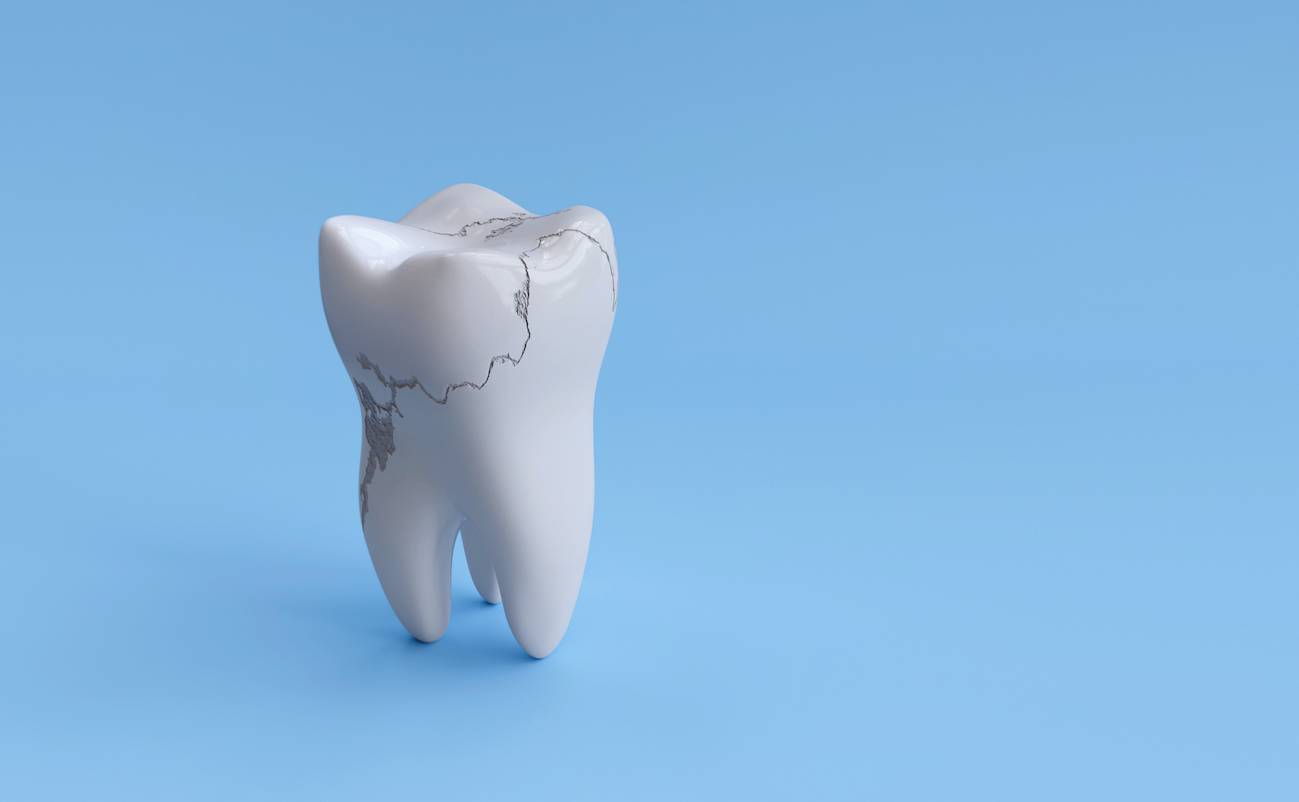Your tooth contains enamel designed to withstand external impact, but your tooth can fracture and crack due to pressures from biting, chewing, clenching, or unexpected oral injuries. A hairline fracture results from pressure points on the tooth's enamel surface created by a sharp movement in the mouth that snaps off small pieces of tooth. These thin cracks on your tooth can be easily spread if you bite hard on something or grind your teeth together. A fractured tooth can go undetected for days or weeks if it's small enough to remain hidden in the gum line.
What is a Hairline Tooth Fracture and How is it Caused?
A hairline tooth fracture, also known as a craze line, is a small crack on the surface of the tooth that doesn't extend deep into the tooth's structure. There are two types of hairline fractures, linear and transverse, where a linear fracture is a hairline fracture with no change in tooth structure. A transverse fracture is a crack in the tooth's cusps and will affect surface aesthetics. They are caused by trauma from an impact like falling on your teeth or chewing something hard. These fractures are commonly caused by normal wear and tear or trauma to the tooth. Some of the specific causes of hairline tooth fractures include:
- Biting down on hard objects: Chewing on hard objects such as ice, hard candy, or nuts can cause hairline fractures in teeth.
- Teeth grinding or clenching: Habitual grinding or clenching of teeth, also known as bruxism, can cause hairline fractures in teeth over time.
- Trauma to the mouth: A blow to the face or mouth can cause hairline fractures in teeth.
- Temperature changes: Rapid temperature changes, such as eating hot food and then drinking cold water, can cause hairline fractures in teeth.
- Age: Over time, teeth naturally become more brittle and can develop hairline fractures with age.
- Weakened teeth: Teeth that are weakened by decay, previous dental work, or other dental problems may be more prone to developing hairline fractures.
It's important to note that hairline tooth fractures may not always be immediately noticeable, but they can cause sensitivity, pain, or other problems over time. If you suspect you have a hairline tooth fracture, it's important to see a dentist for an evaluation and treatment.
What are the Treatment Options for Someone with a Hairline Tooth Fracture or Crack?
The treatment options for a hairline tooth fracture or crack depend on the severity of the fracture and the symptoms experienced by the individual. Here are some of the common treatment options:
- No treatment: If the hairline fracture is small and not causing any symptoms, the dentist may recommend no treatment and just monitor the tooth for any changes.
- Dental bonding: Dental bonding involves the application of tooth-colored resin to the surface of the tooth to fill in the crack or fracture.
- Dental crowns: A dental crown is a cap that is placed over the tooth to protect it and restore its shape and function.
- Root canal therapy: If the hairline fracture extends into the pulp of the tooth, it may require root canal therapy to remove the damaged tissue and restore the tooth.
- Tooth extraction: In severe cases where the fracture is deep and cannot be restored, the tooth may need to be extracted.
It's important to note that if left untreated, a hairline tooth fracture can worsen over time and potentially lead to more serious dental problems. Therefore, it's important to see a dentist if you suspect you have a hairline tooth fracture or crack.
How to Prevent a Hairline Tooth Fracture?
There are several ways to prevent hairline tooth fractures. Here are some tips:
- Avoid chewing on hard objects: Avoid chewing on hard objects such as ice, hard candy, or popcorn kernels. These can cause hairline fractures in teeth.
- Wear a mouthguard: If you participate in sports or other activities that may involve contact to the mouth, wear a mouthguard to protect your teeth from trauma.
- Practice good oral hygiene: Brush your teeth twice a day, floss at least once a day, and visit your dentist regularly for check-ups and cleanings. This helps keep your teeth healthy and strong, making them less susceptible to fractures.
- Get dental work done promptly: If you have decay or other dental problems, get them treated promptly. This helps prevent further damage to the tooth, which can lead to fractures.
- Address teeth grinding or clenching: If you grind or clench your teeth, talk to your dentist about getting a custom-fitted mouthguard or other treatments to help protect your teeth.
- Be mindful of temperature changes: Avoid sudden and extreme temperature changes, such as eating hot food and then drinking cold water. This can cause hairline fractures in teeth.
By following these tips, and visiting the Upper hunt Club Dental Centre for regular check-ups, you can help prevent hairline tooth fractures and maintain good oral health.
What are the Symptoms of a Hairline Tooth Fracture or Crack?
The most common symptom is sharp pain when eating cold or crunchy food. You will notice that your tooth becomes sensitive to hot and cold. You will also start feeling acute pain when eating something hard or crunchy. When you bite into anything you may feel discomfort, especially at the tip of your cracked tooth. The tooth will also become sensitive and inflamed, and you will notice that the gum tissue around the tooth is swollen and sore.
A small hairline crack can develop into a major one if you neglect it and continue to consume hard and crunchy foods. To avoid further damage, if you suspect a hairline tooth fracture schedule a dental check up with us at the Upper Hunt Club Dental Centre in Ottawa. Contact us today to book an appointment!













